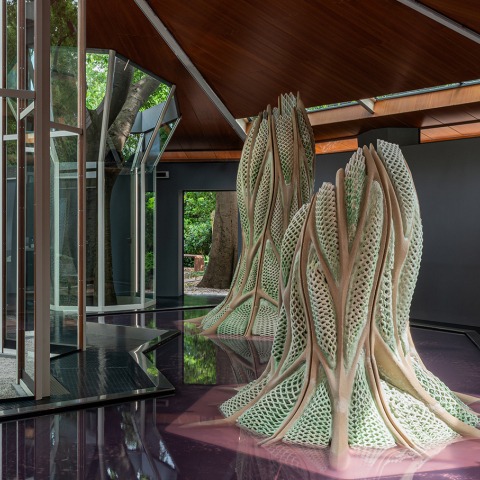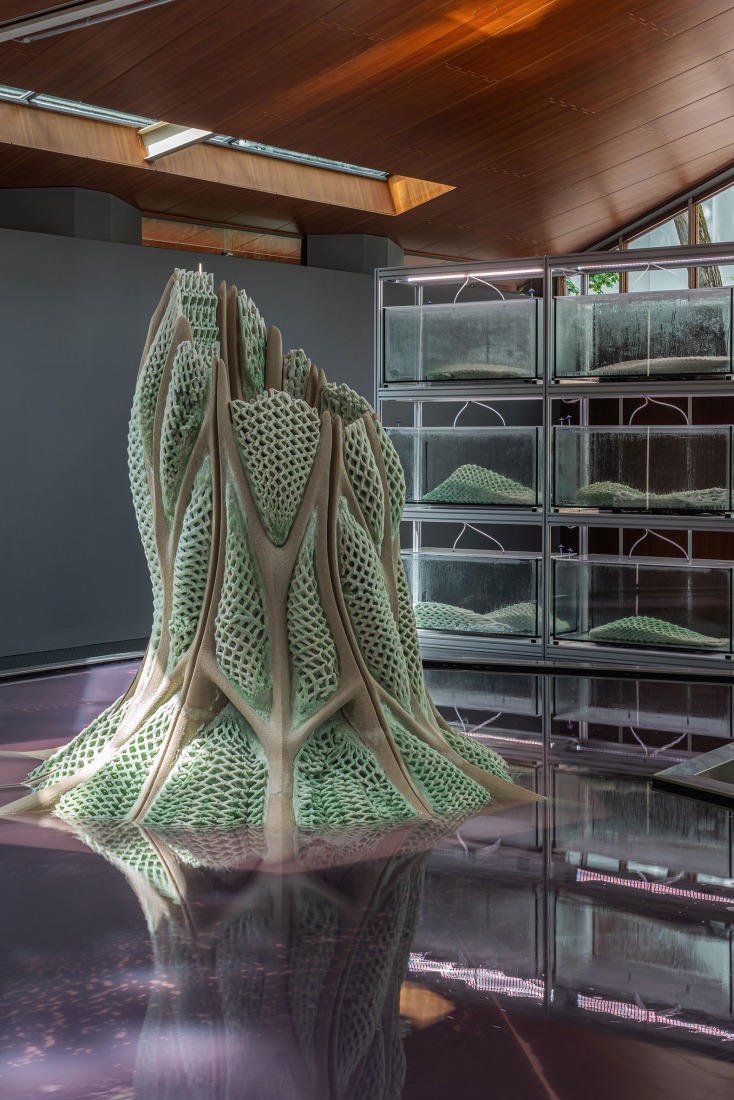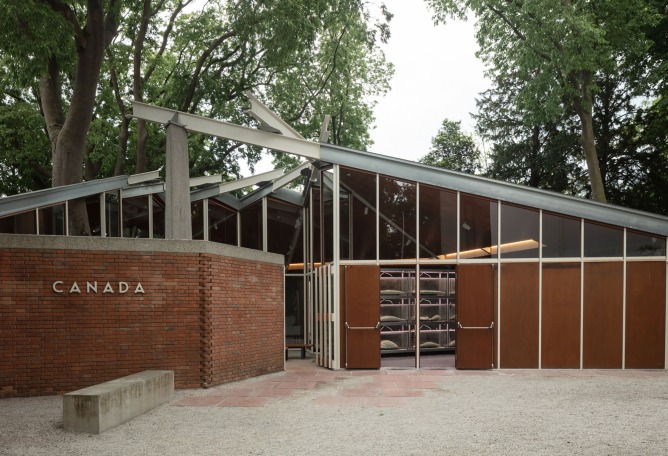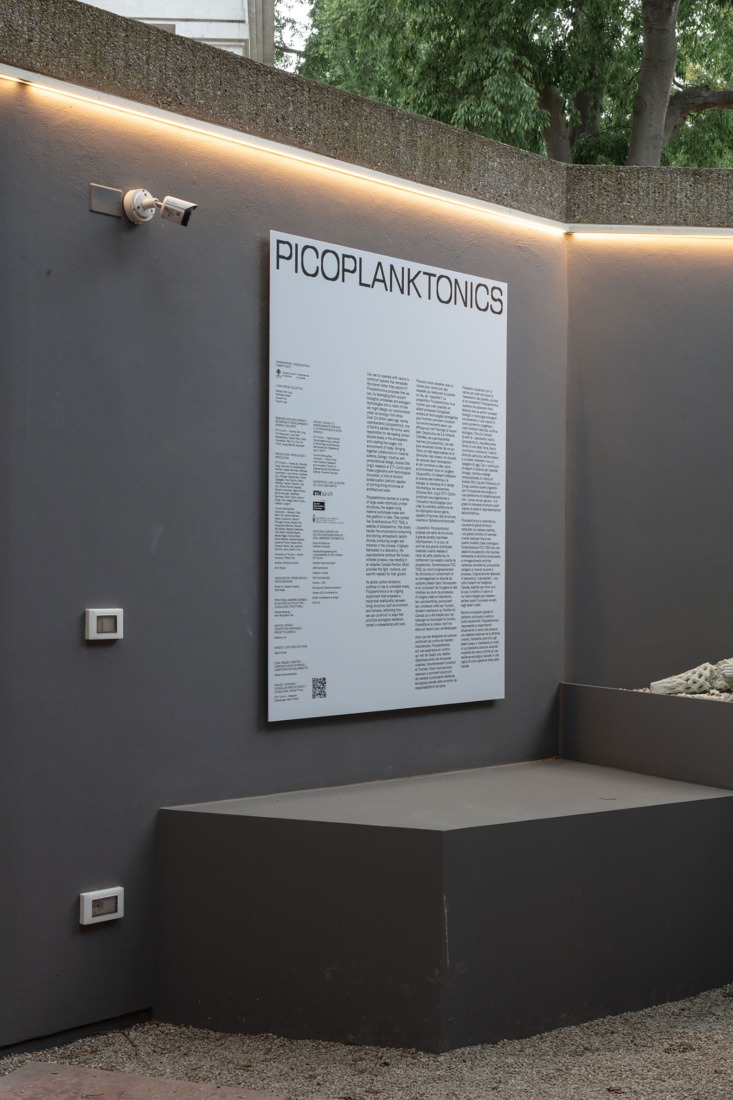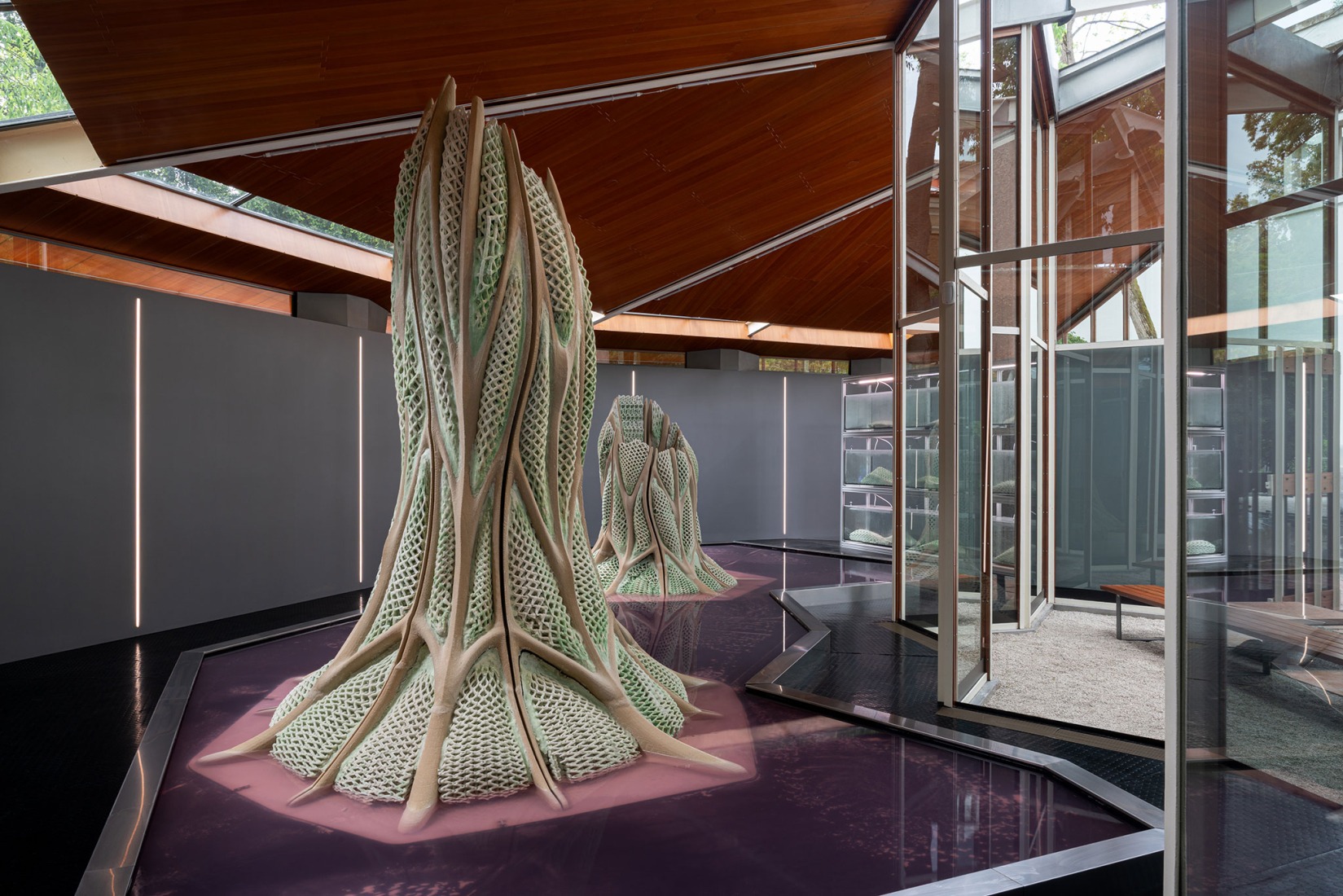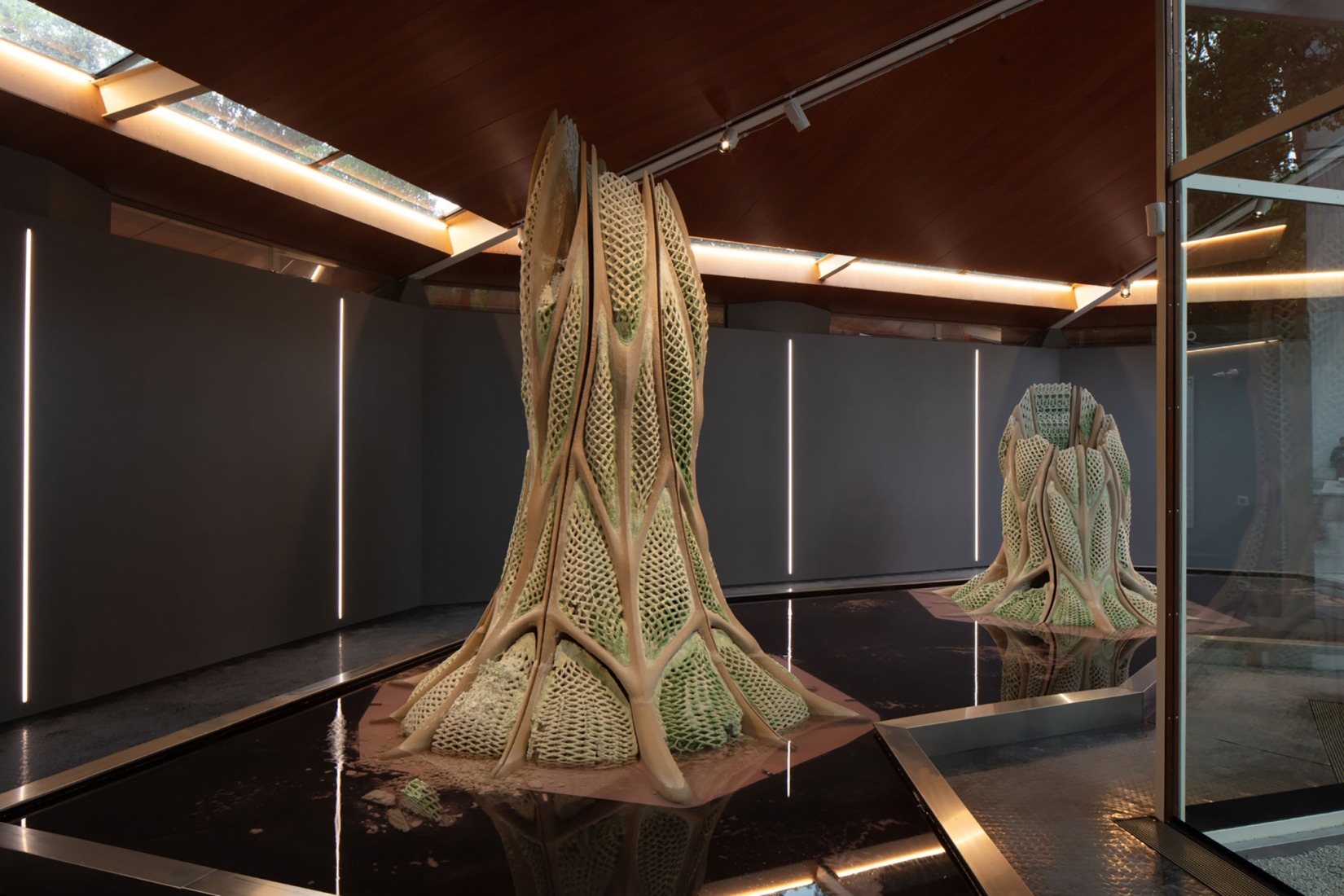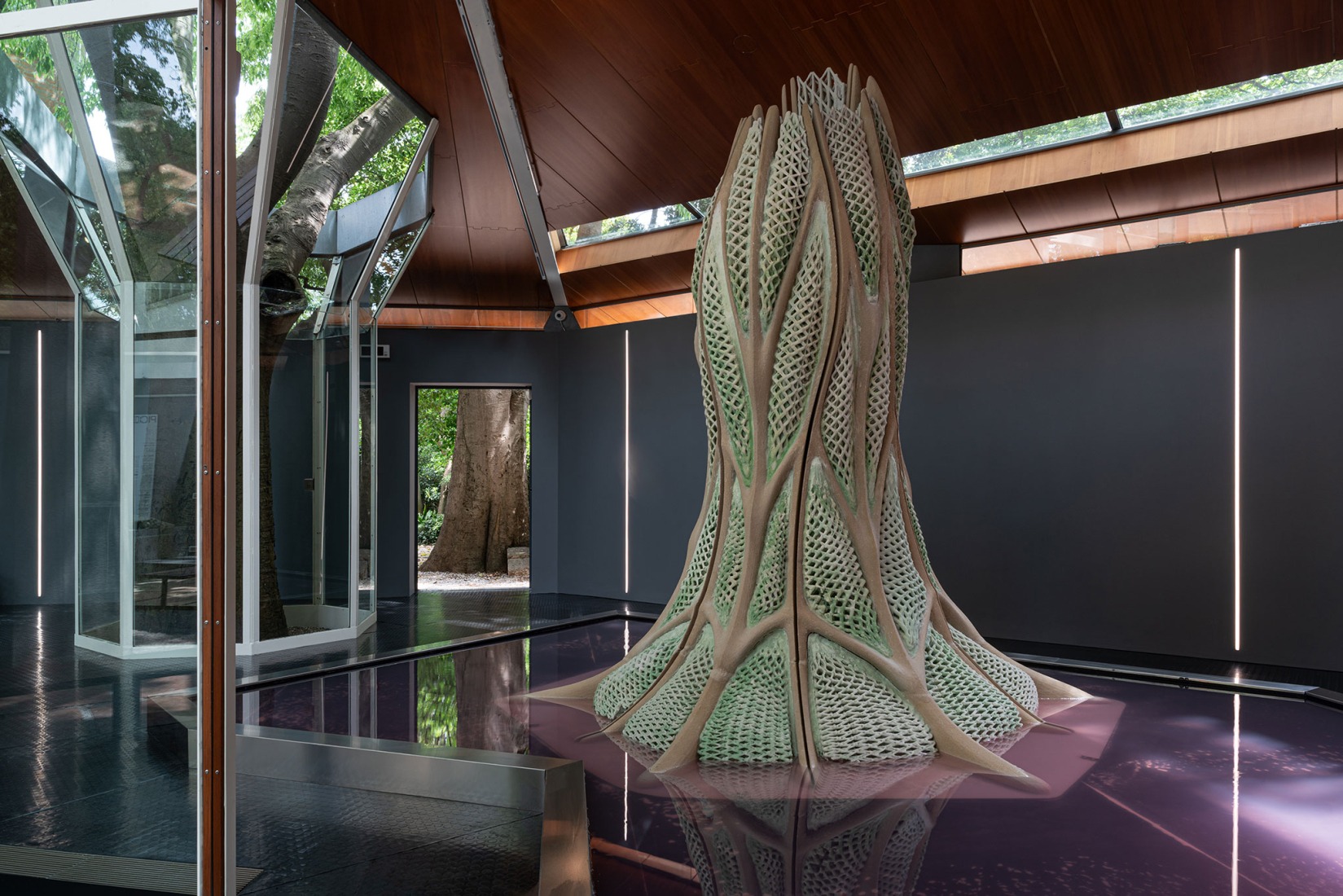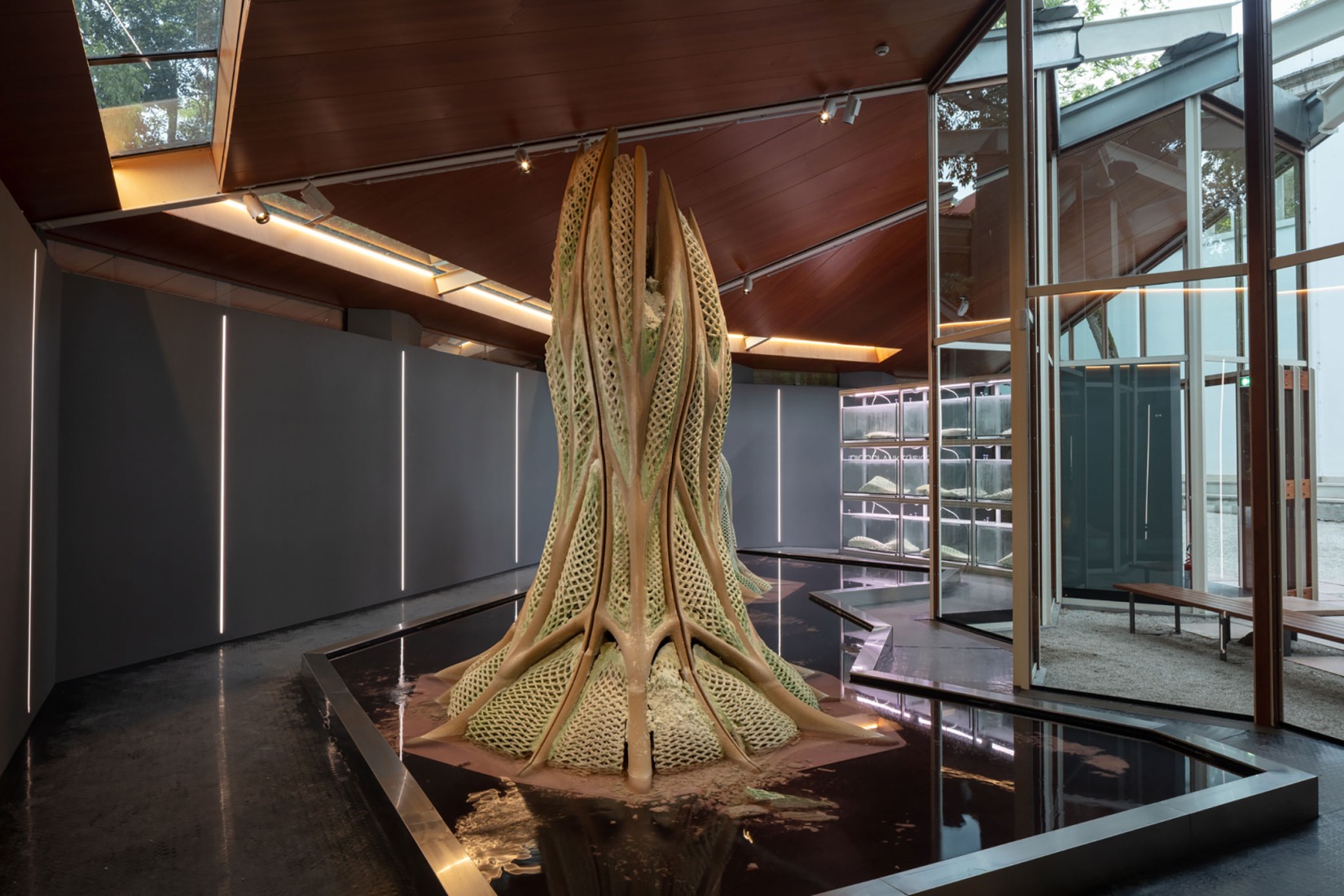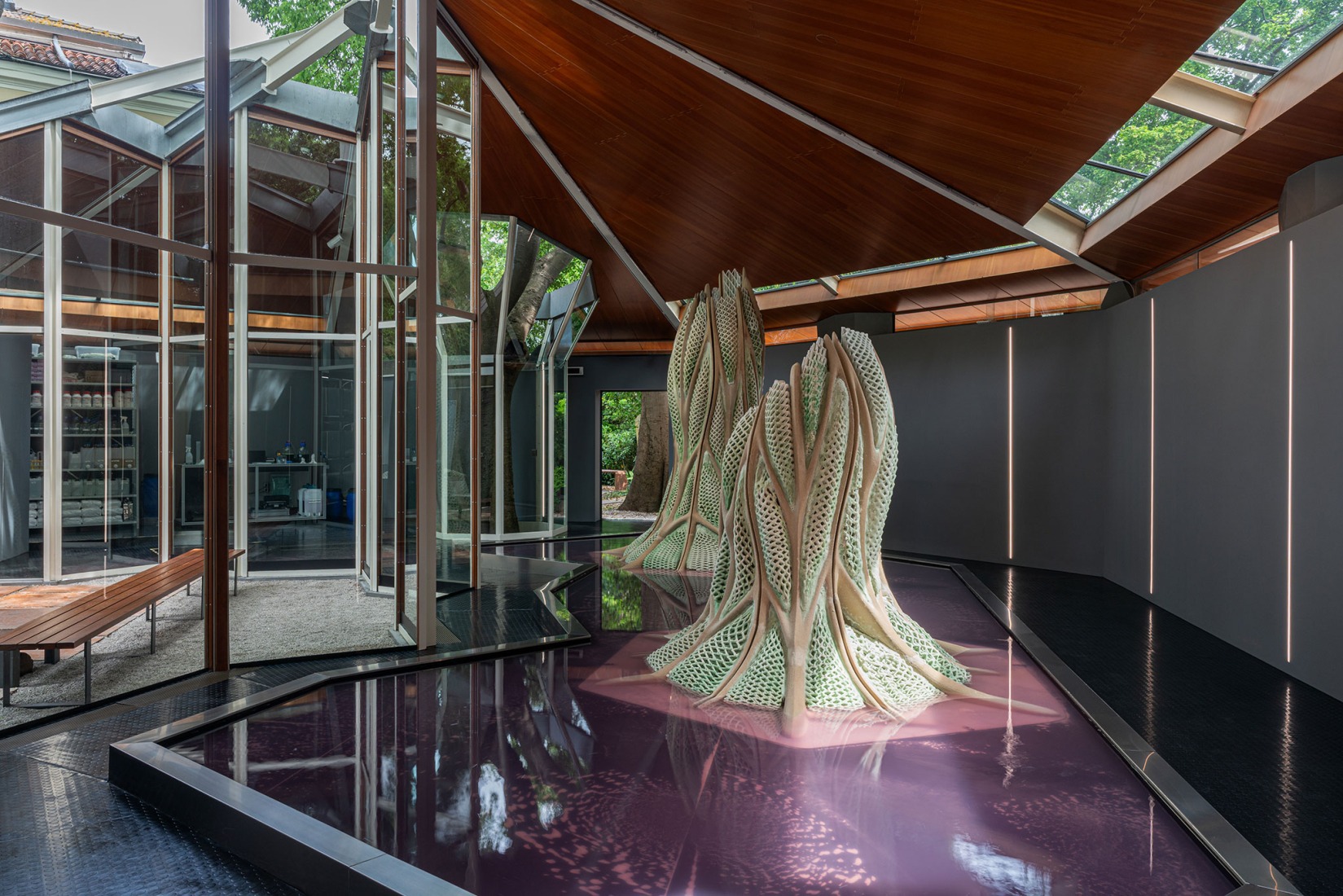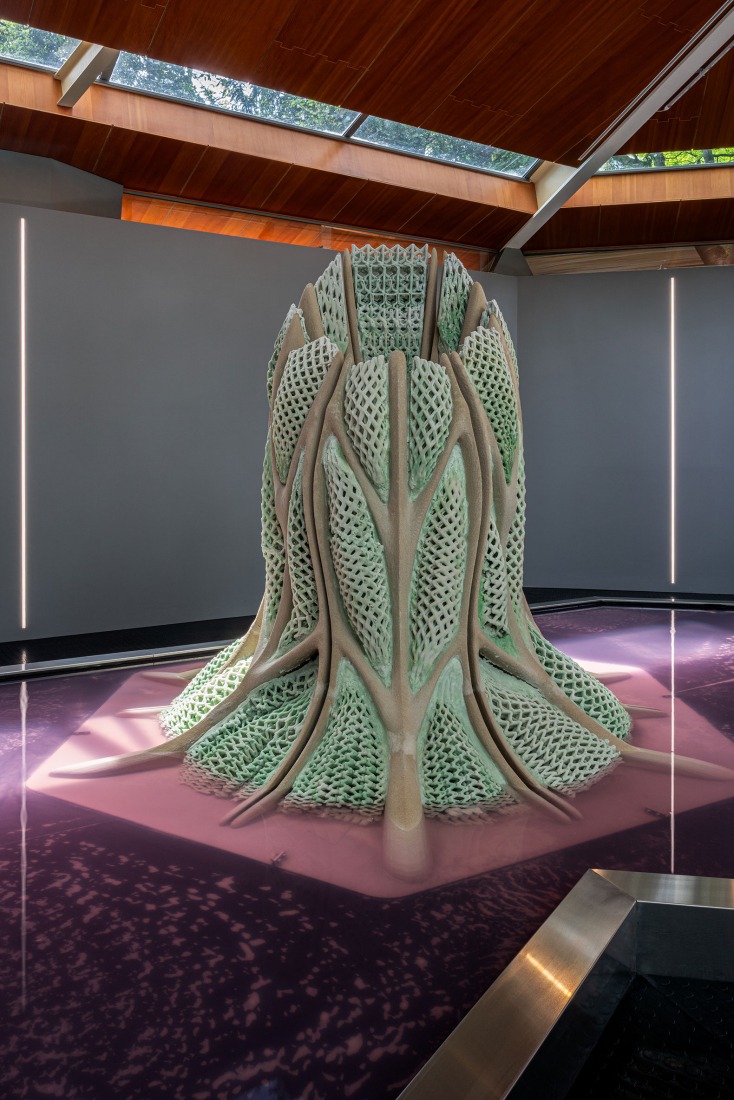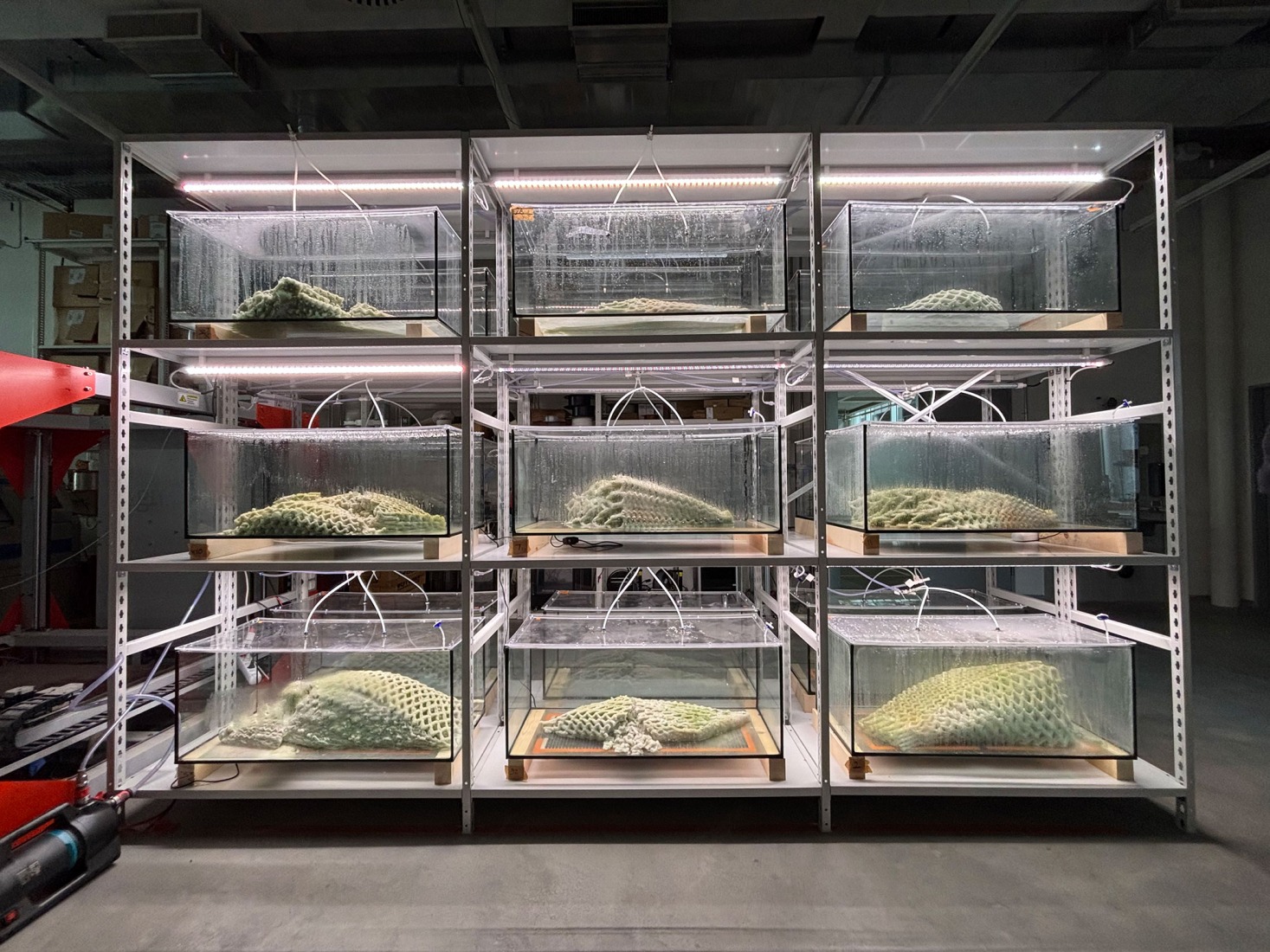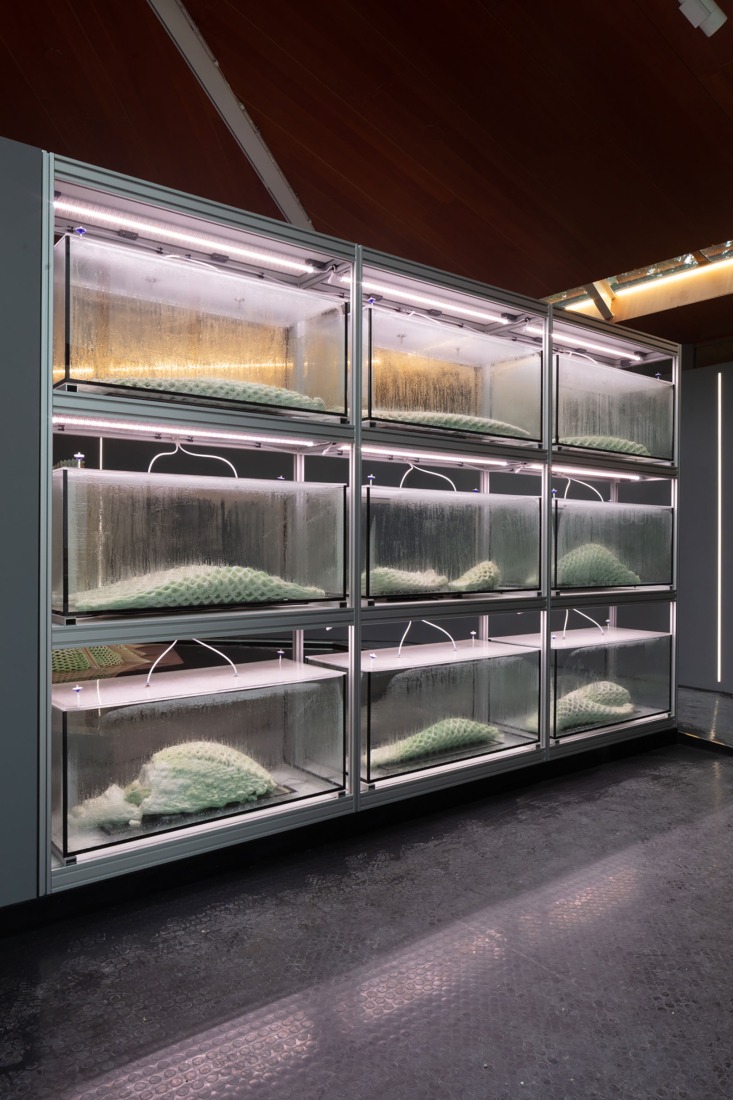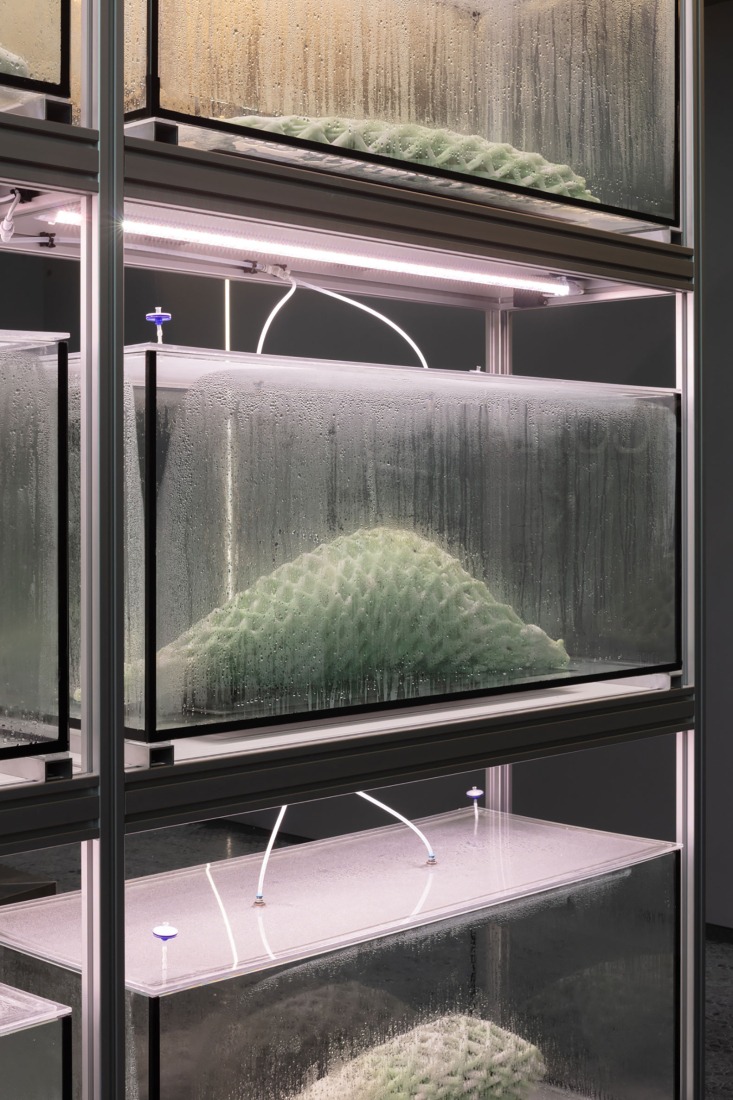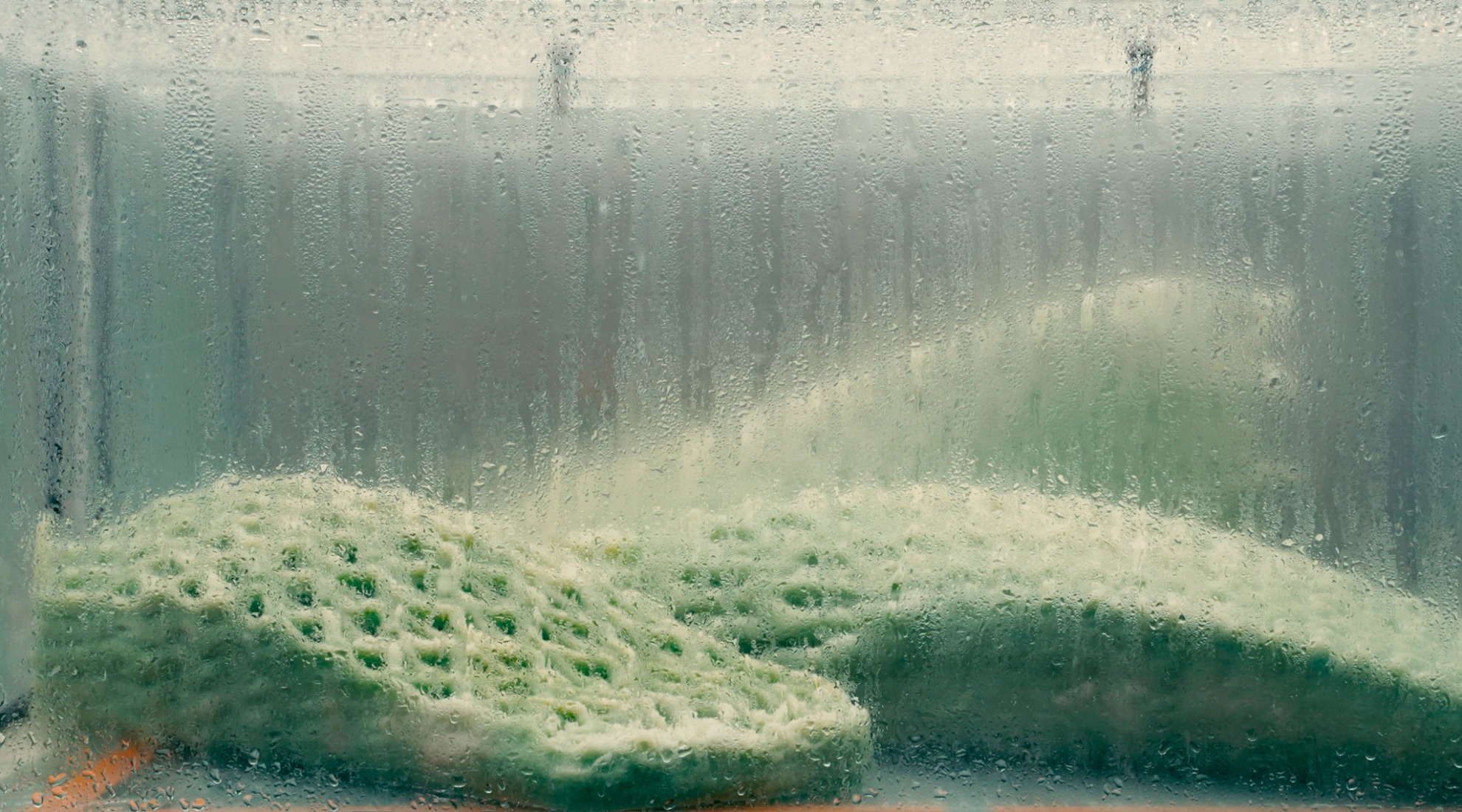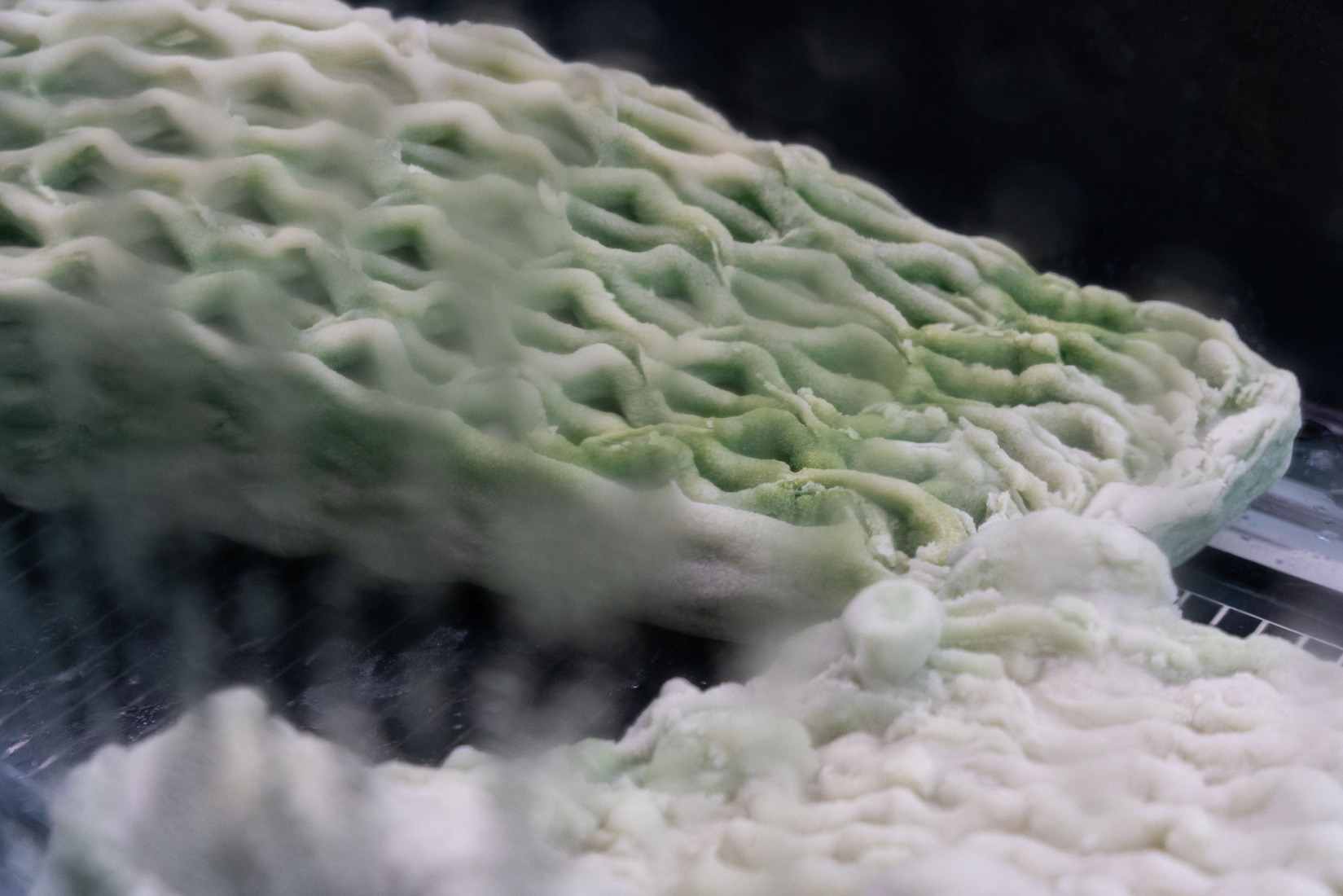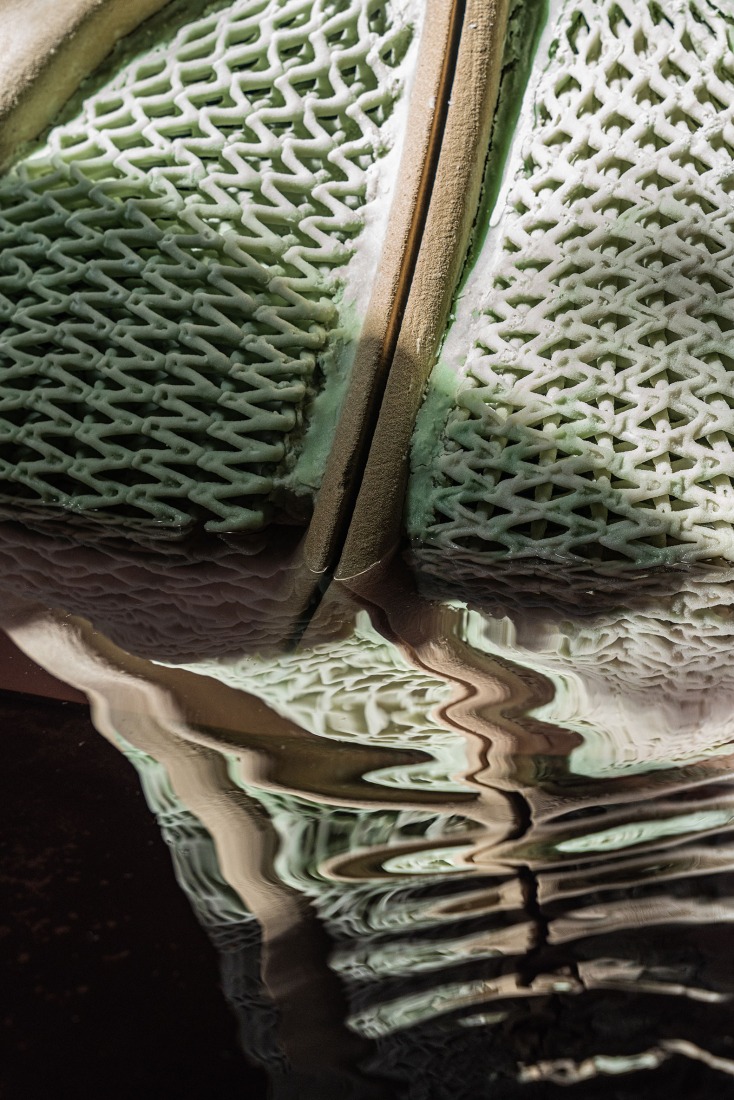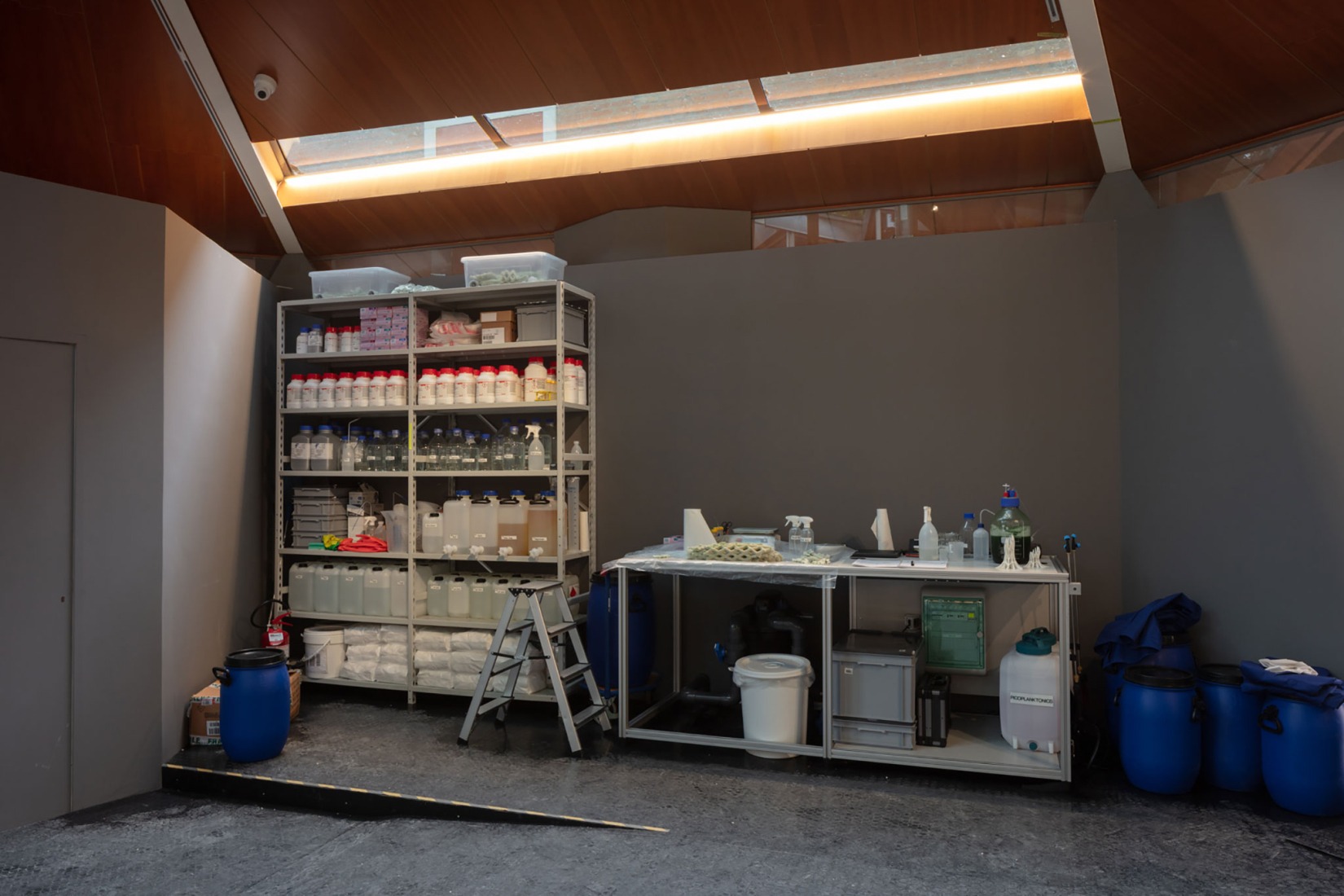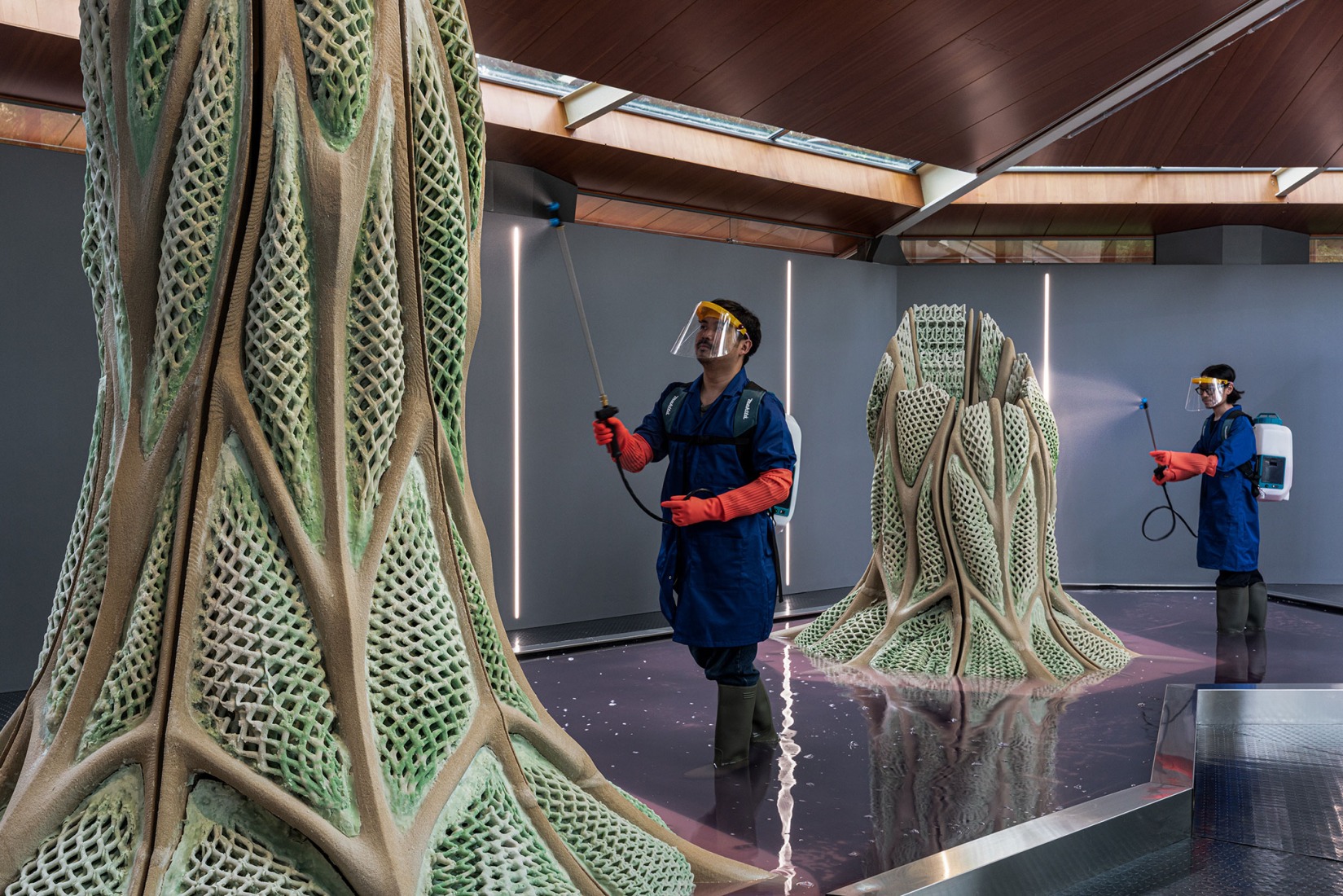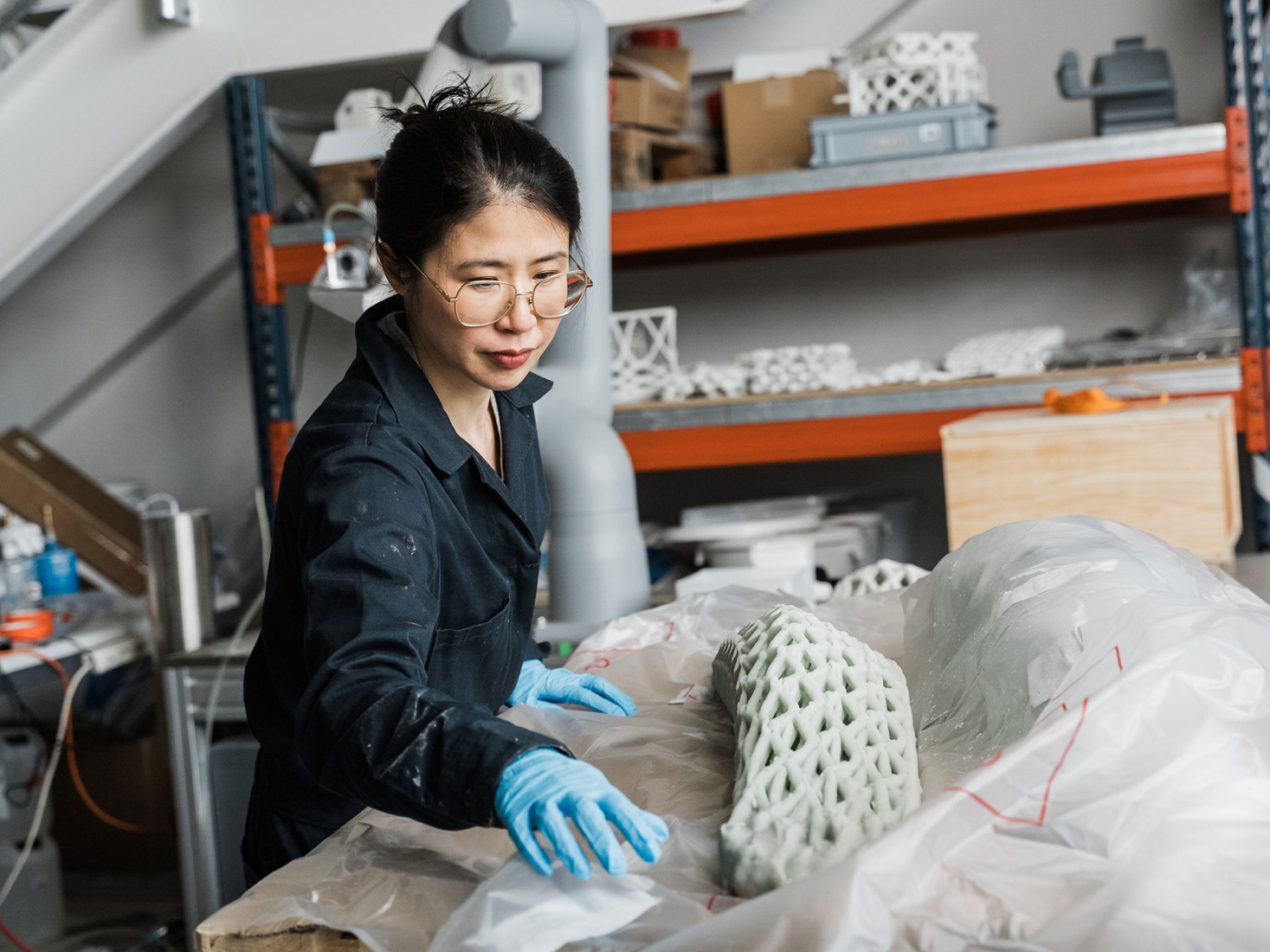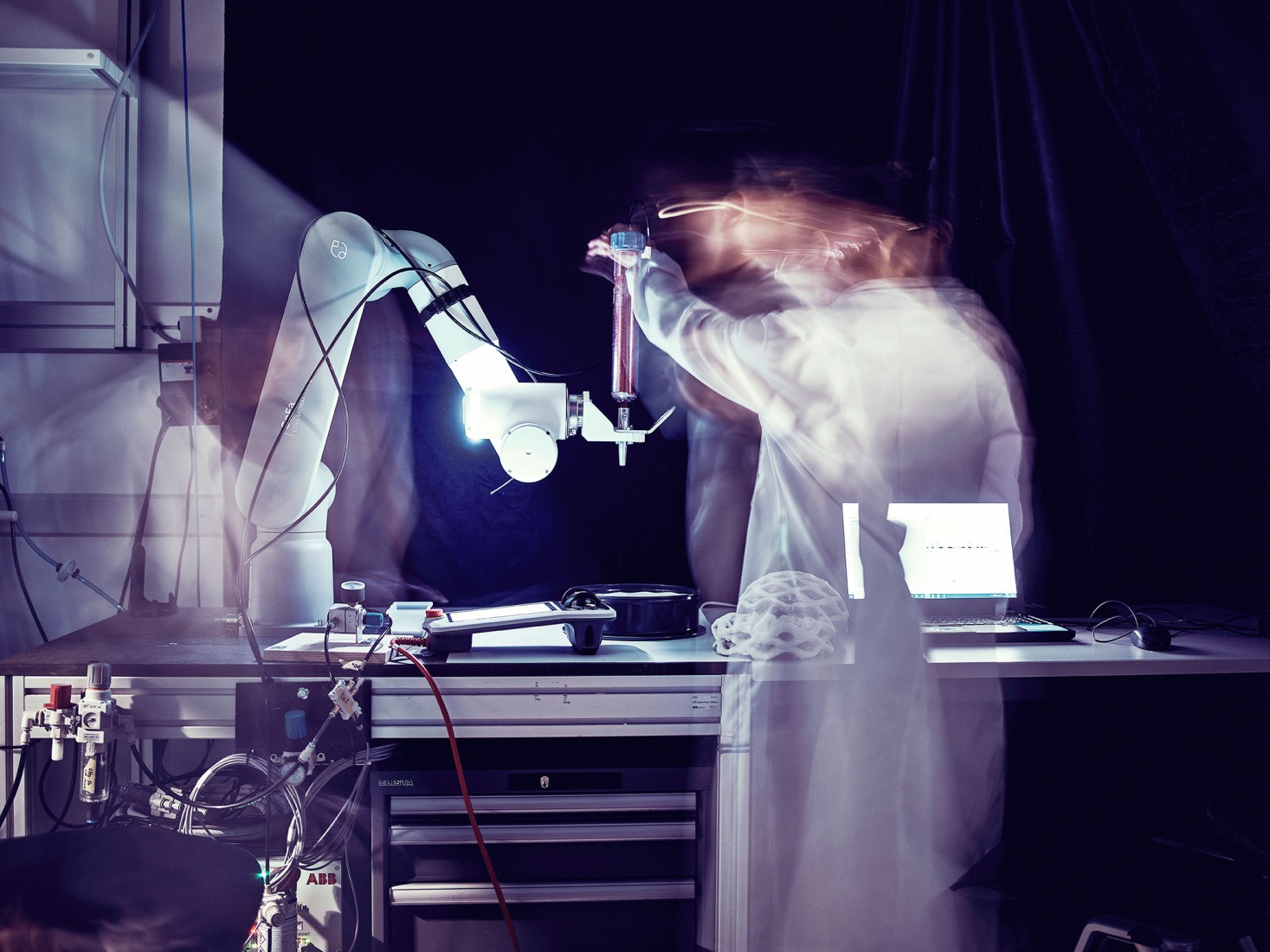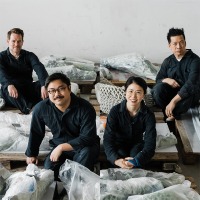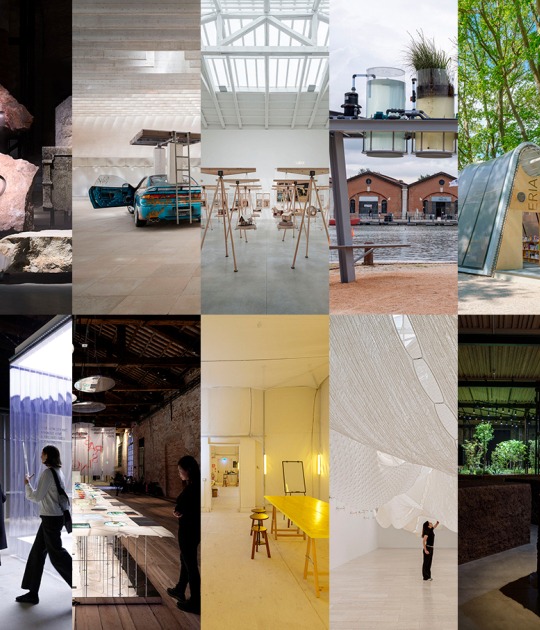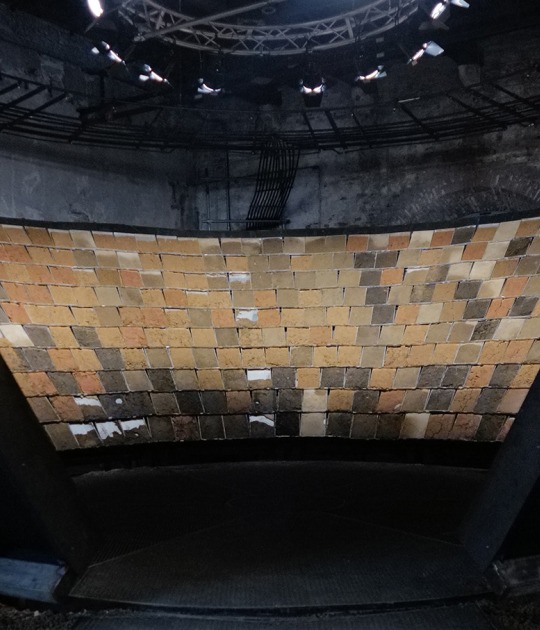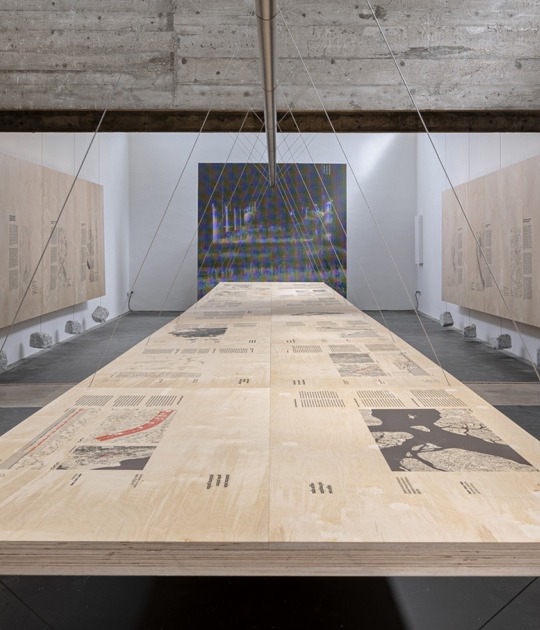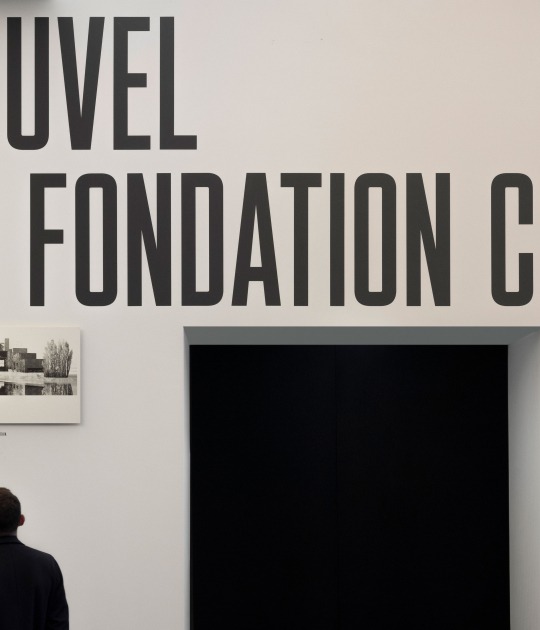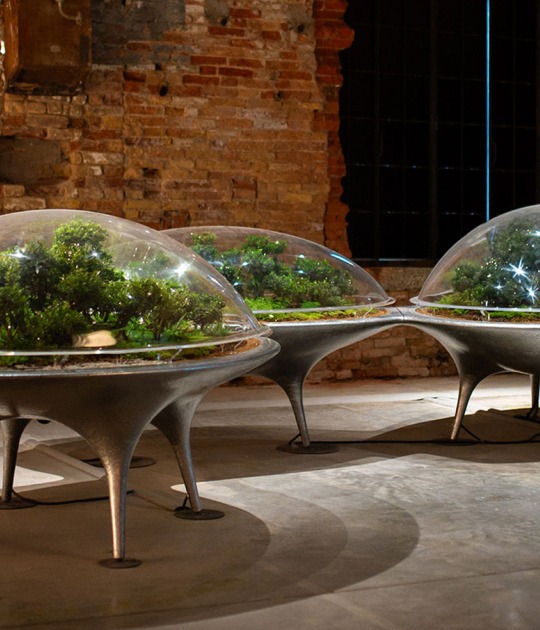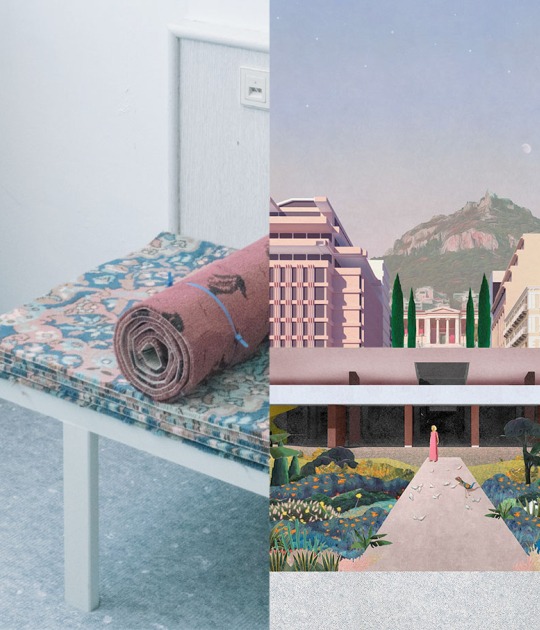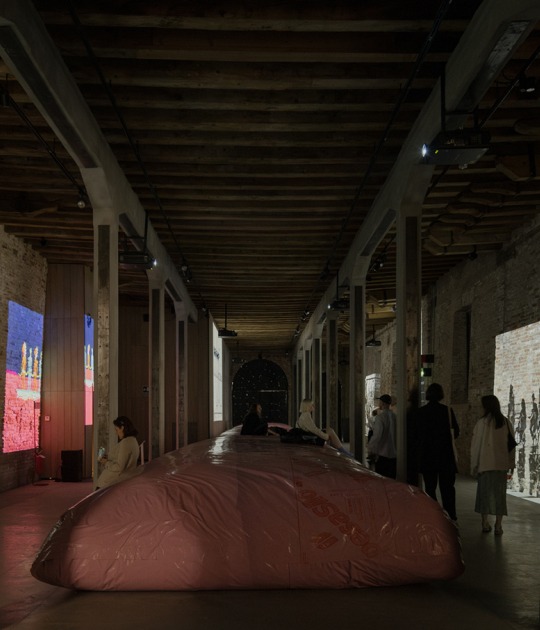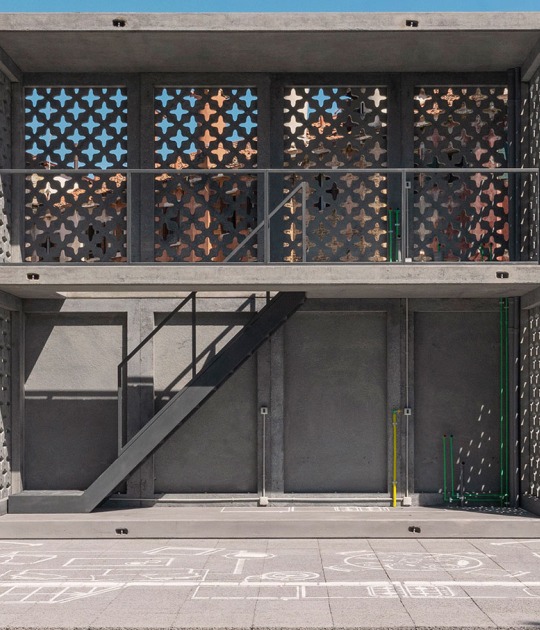Combining ancient biological processes with emerging technologies, the Living Room Collective exhibition focuses on leveraging the design principles of living systems to develop sustainable, intelligent, and resilient materials and technologies for the future.
“The Canada Council for the Arts is delighted to unveil Picoplanktonics by the Living Room Collective at the 19th International Architecture Exhibition – La Biennale di Venezia. Through the lens of architecture, this year’s Canadian exhibition brings technological innovation and ecological stewardship together. It is a unique exhibition, sure to inspire global audiences and to ignite important conversations, about how our built environment might better house and use natural systems for a more sustainable future.”
Michelle Chawla, Executive Director of the Canada Council for the Arts.
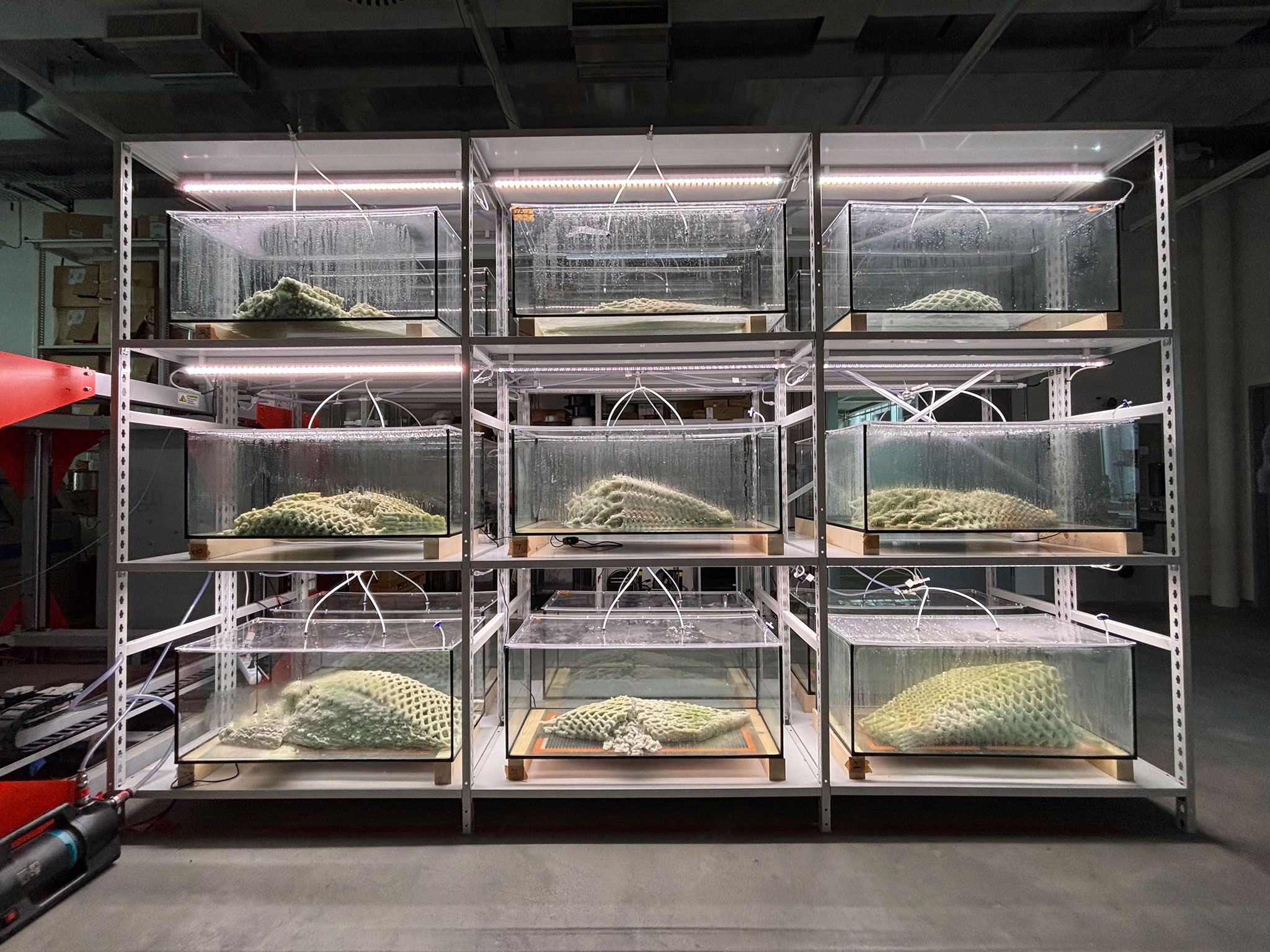
Picoplanktonics at the Canada Pavilion as part of the Biennale di Venezia by Living Room Collective. Photograph by Clayton Lee.
The living material structures that visitors encounter upon entering the Canadian Pavilion were originally fabricated in a laboratory at ETH Zurich. They are the largest 3D-printed structures produced using a pioneering biofabrication platform.
"Picoplanktonics marks four years of research at ETH Zürich with international collaborators in material science, biology, robotics, and computational design. As we move these living prototypes into the Canada Pavilion, we are thrilled to invite the public into this open experiment and reveal all phases of the material’s life, including growth, sickness, and death, while collectively imagining a regenerative design approach that seeks planetary remediation.”
Andrea Shin Ling, The Living Room Collective.

Picoplanktonics at the Canada Pavilion as part of the Biennale di Venezia by Living Room Collective. Photograph by Living Room Collective.
As part of the intervention, the Canada Pavilion had to be adapted to provide sufficient light, humidity, and heat for the living cyanobacteria within the structures to grow, thrive, and transform. To realize the unique Picoplanktonics experiment, maintenance staff attend to and care for the structures, emphasizing care and stewardship as essential elements of the design.
In the face of steadily increasing carbon emissions, Picoplanktonics presents a vision of how a regenerative building system could work. By harnessing the reciprocal relationship between living structures, the built environment, and humans, the experiment questions the principles of construction, prioritizing ecological resilience over the survival of the human species.
